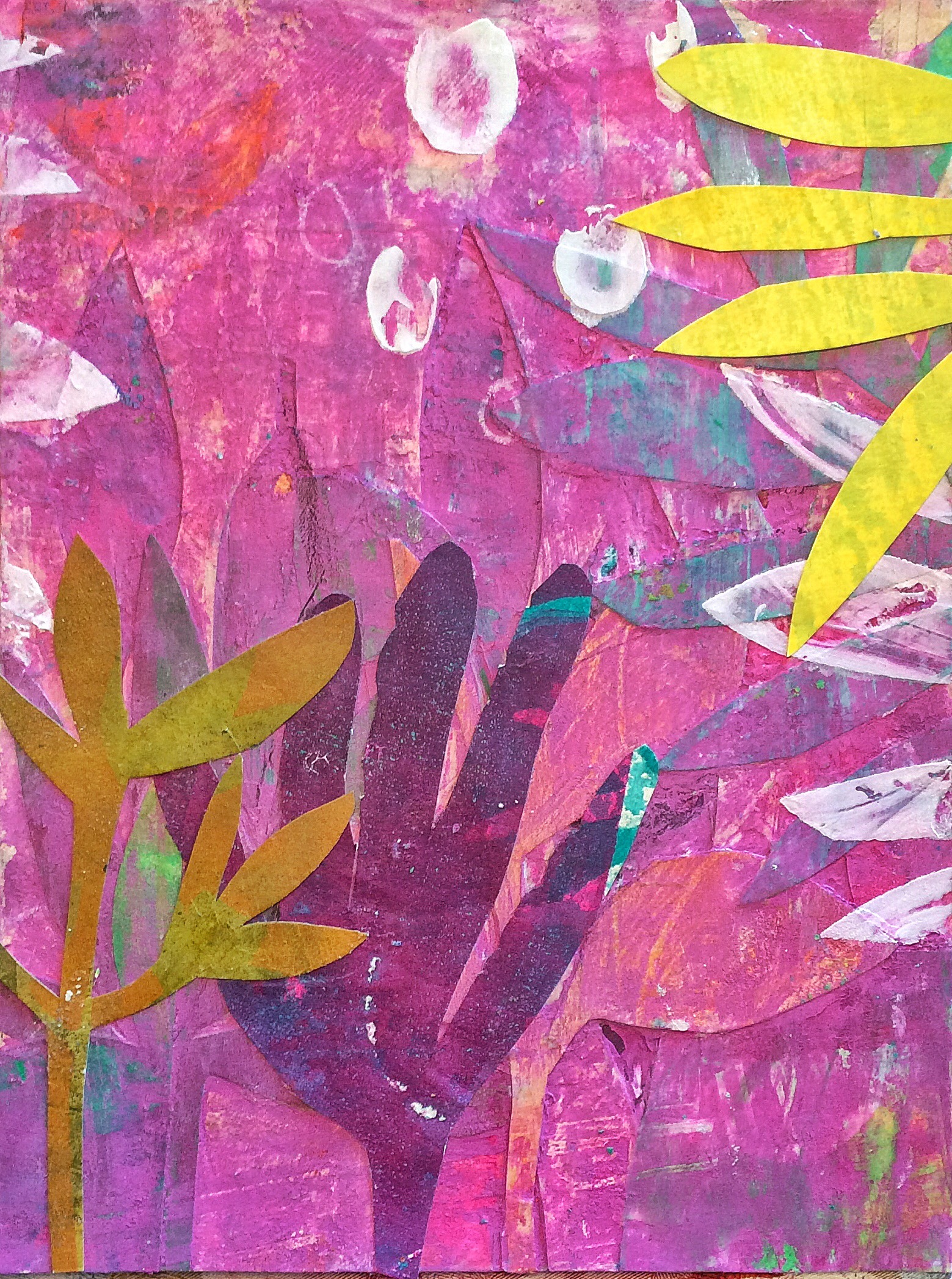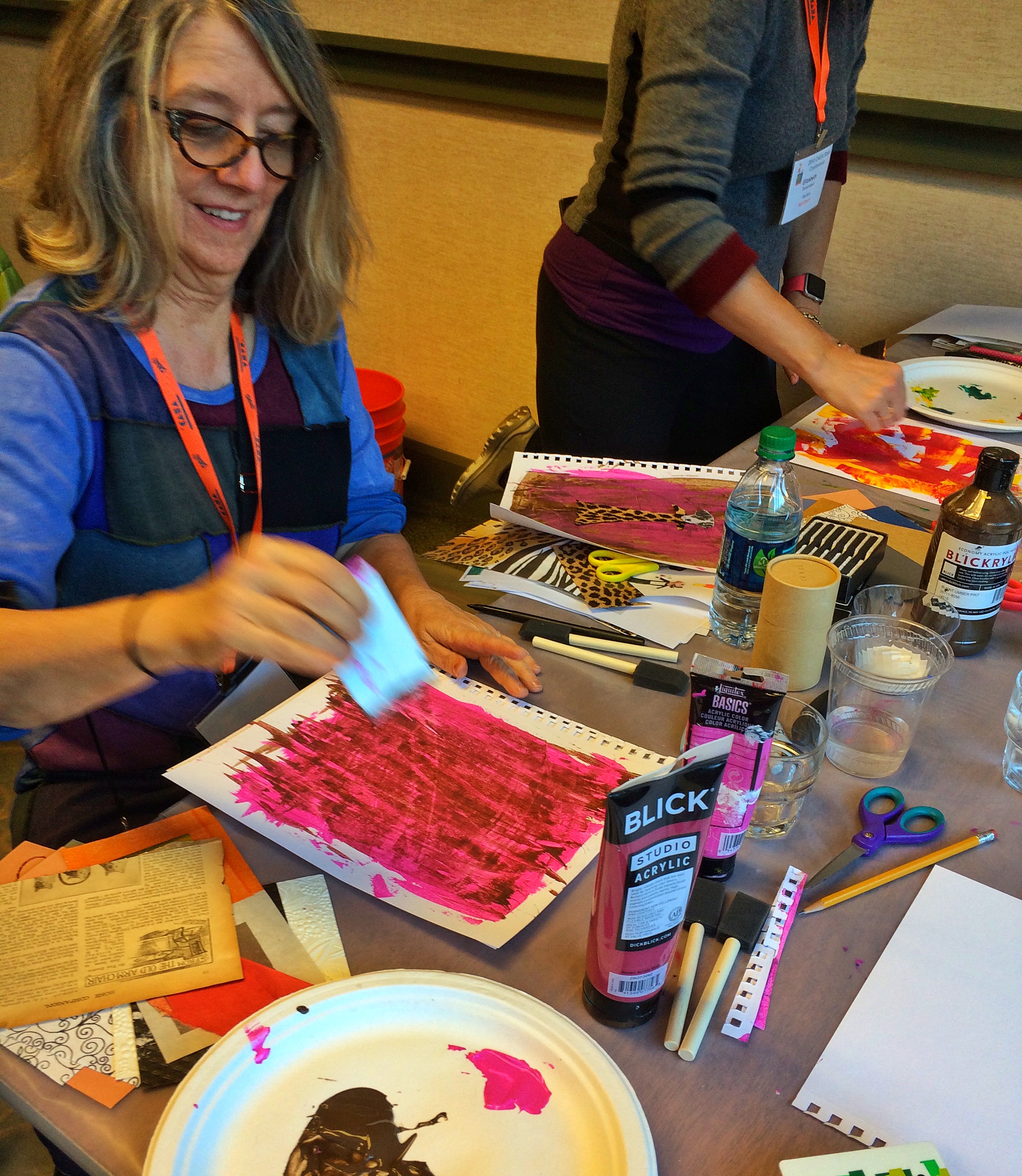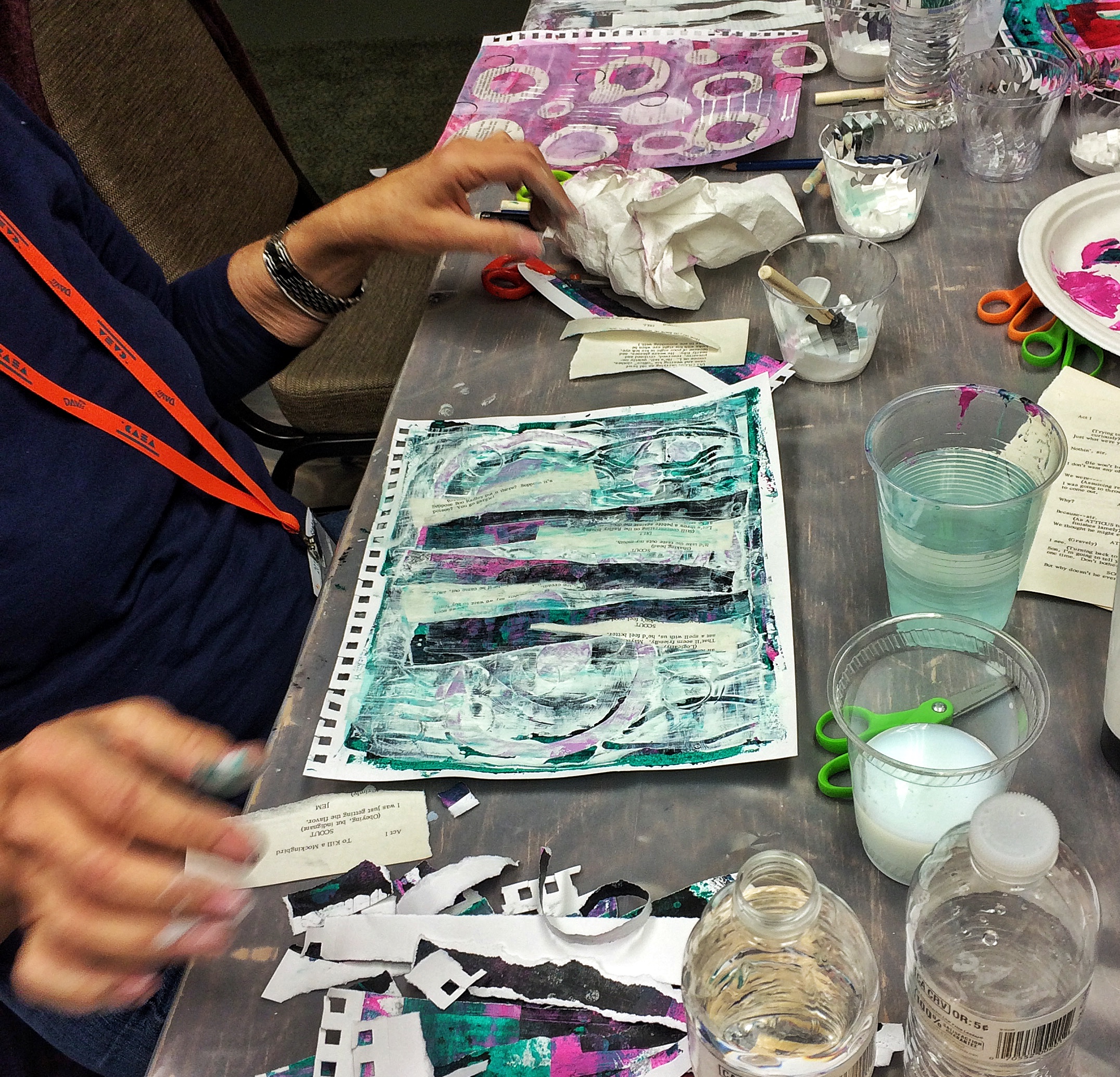Today, I decided to experiment with a background akin to the one outside of my studio: dark, rain soaked and blue gray! I challenged myself to use opaque watercolors on top of the ground, seeing what I could accomplish with layers of paint. I feel that I've made a start and want to investigate further. The delicate nature of the watercolor needs a lighter ground, but I'm game for it, as a much as for a sunny sky--at least for a few minutes.

Day 4, 30x30, Into the Rain
Finally today, rain, and we here in the West are truly grateful. As I moved about my studio today, cutting small squares of paper into shapes like large wet drops, this poem from my childhood looped through my mind: The rain is raining all around, / It rains on fields and trees, / It rains on the umbrellas here / And on the ships at sea. ---Robert Louis Stevenson

Day 3, 30x30: Back to the Valley
Today after a week in San Francisco, I headed home to Davis in the early morning. As I drove over the Golden Gate bridge and into the green hills of Marin, a rainbow spread itself over the hazy blues and grays of morning. That contrast of brilliant color with gray found its way into this collage.

Day 2, 30x30, San Francisco
My husband and I took a walk several days ago in the botanical gardens of Golden Gate Park, both of us absorbed by all of the whimsical and, to my eyes, magical shapes we saw. This collage came about after our outing. It wasn't until later that I looked at it with my art therapist eyes and said "oh my!"

30 Days, 30 Paintings
It's not often that I take up a challenge like this but when I heard about the 30x30 challenge from my friend Linda Johnson, I clicked and jumped. I want to try exploring collage in a tactile way with luscious mediums, creamy acrylics and pieced together botanical imagery.
 My studio for Day 1 is a dining room table in my friend's San Francisco flat. Compact and perfect, it's just blocks away from the SF Botanical Gardens where I'm gathering inspiration.
My studio for Day 1 is a dining room table in my friend's San Francisco flat. Compact and perfect, it's just blocks away from the SF Botanical Gardens where I'm gathering inspiration.

The 30x30 challenge is sponsored by Leslie Saeta. If you have a chance to check it out, there is some amazing work on display. And now, let the wild rumpus begin!
Mixed Media Magic
 Recently I had an opportunity to teach a master class for the California Art Educator's Association (CAEA), convening in Sacramento for their yearly conference.
I'd put together a description for the class months ago when I had some rough ideas of what I might teach. As the time grew closer however, possibilities multiplied like rabbits due to a new book I discovered; Surface Treatment Workshop: Explore 45 Mixed Media Techniques.
Recently I had an opportunity to teach a master class for the California Art Educator's Association (CAEA), convening in Sacramento for their yearly conference.
I'd put together a description for the class months ago when I had some rough ideas of what I might teach. As the time grew closer however, possibilities multiplied like rabbits due to a new book I discovered; Surface Treatment Workshop: Explore 45 Mixed Media Techniques.
Explore I did, buying containers of strange substances and trying them out in the studio. I loved the sound of the different techniques; embossing, embedding, inscribing, faux encaustic.

How to narrow them all down? I did a beta workshop with willing friends to test out my ideas. They dove into the materials with the zest of people who haven't had a meal in days; paint, papers and gels filled the surface of the ground paper. Shapes were torn, embedded, lines inscribed and we discovered the power of used gift cards.
Finally, I chose 3 techniques that I thought would be easy, inexpensive, adaptable and if carried out, would end up in some pretty great compositions.
The winners? Expired plastic cards to spread paint like a palette knife, gesso washing, embedding, and inscribing as well as a nifty technique involving two layers of contrasting paint, topped with a sprinkling of water droplets. (Recipe below.)

The only missing ingredient was a volunteer. I prevailed upon my friend and artist, Linda Clark Johnson, to join me for what I promised would be a good time. She graciously accepted and we set off for our art escapade.
A retired art teacher, Linda knows the ways of the educators. She promptly arranged the room into table groups. The conference room quickly filled to the brim with art teachers and their many bags of paint, paper and tools.
I'd never taught a group of teachers before and was delighted to find that as soon as I gave instructions, they dove in with an enthusiasm that was energizing. Table groups mixed, sharing paint and special papers they'd brought, as well as appreciative glances at each others' work.

I was amazed by the magic that these artists coaxed out of their materials. Although I'd never met any of them previously, looking at the images they'd created, I felt that I knew something about them. And they had acquired some simple tools with which to engage their students artistically and therapeutically.
I like to imagine that they will take these ideas, pop them into their capacious Mary Poppin's bag of tools and share them with their students. Like tiny seeds sprouting, artists will continue to appear.
Water drop recipe courtesy of Linda Clark Johnson
Cover your ground with a brilliant layer of color, allow it to dry, then add an additional layer in a contrasting color. Stick your hand in a bowl of water and sprinkle the wet paint with the droplets, allowing it to sit for several minutes. Finally, wipe the paint with a cloth and the areas covered by water come up revealing a wonderful splash pattern.
